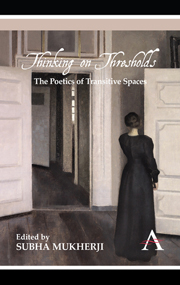Book contents
- Frontmatter
- ACKNOWLEDGEMENTS
- Contents
- List of Illustrations
- Notes on Contributors
- Introduction
- Part One Doors, Windows, Entries
- Part Two Lives and Narratives, Territories and Worlds
- Part Three Matter, Mind, Psyche
- Part Four Reading, Writing, Playing, Listening
- Select Bibliography (including Discography)
Introduction
Published online by Cambridge University Press: 05 March 2012
- Frontmatter
- ACKNOWLEDGEMENTS
- Contents
- List of Illustrations
- Notes on Contributors
- Introduction
- Part One Doors, Windows, Entries
- Part Two Lives and Narratives, Territories and Worlds
- Part Three Matter, Mind, Psyche
- Part Four Reading, Writing, Playing, Listening
- Select Bibliography (including Discography)
Summary
The woman in the painting on the cover of this book stands with her back to us. She is far from open to the viewer. What is half-open in the painting is the door in front of her, and indeed also the door to her right, and another door and a sliver of sun-lit window glimmering from the interior into which the central door allows us a peek. The woman's head, in keeping with the tentativeness of the doors, is half-turned towards the main door and the recess into which it opens. Her body is turned – though only partly – towards the door on the right. The positions of the human figure and the architectural figures speak to each other and build up to an image that holds a delicate, precarious, yet oddly calm and luminous sense of the uncertain, the indeterminate and the transitory. The lure of the image lies partly in the infinite possibilities of what Gaston Bachelard might have called objects that may be opened; partly in the tease of being made to pause on the brink, at the moment when clarity, definition and even interiority are just beyond grasp; partly in the fascination of transitional spaces; and partly in the risk, even unease, underlying moments of transition, and the excitement of not knowing where one might end up. It is defined by a sense of contingency, and it shapes narrative into a structure of desire.
- Type
- Chapter
- Information
- Thinking on ThresholdsThe Poetics of Transitive Spaces, pp. xvii - xxviiiPublisher: Anthem PressPrint publication year: 2011

